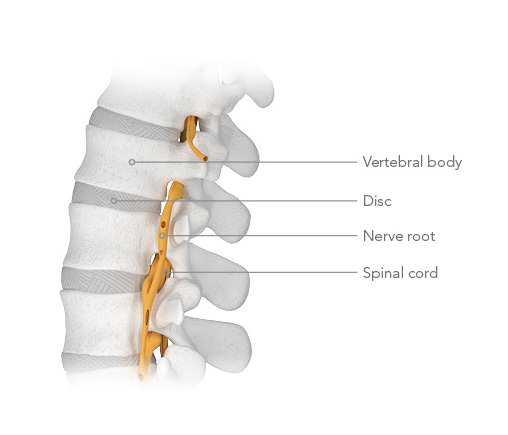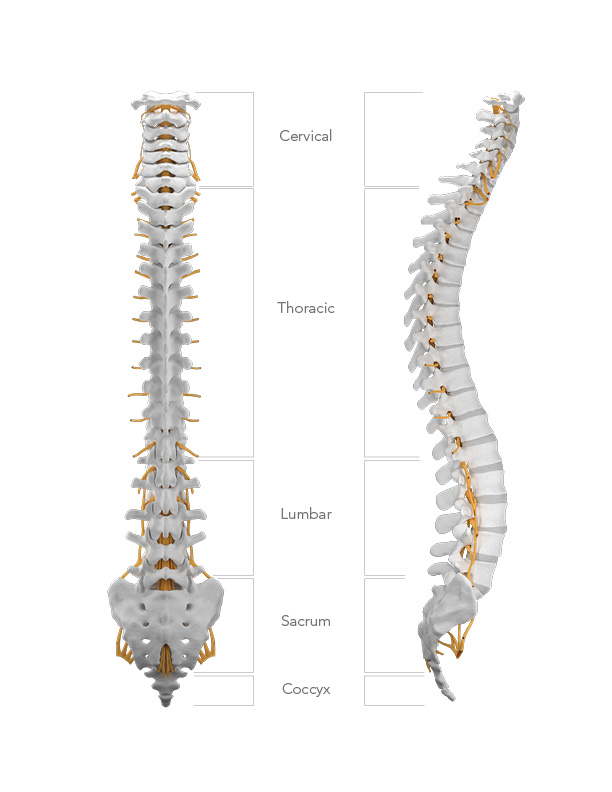Anatomy
Understanding the human spine starts with knowing its anatomy. Also known as the vertebral column, the spine’s main functions are to protect the spinal cord and enabling bodily movements by transmitting signals from the brain to the extremities. The spine also plays a role in absorbing shock during life activities like walking, lifting and sitting.
The Spinal Column
The spinal column is made up of 33 vertebrae (bones). Each vertebra has a body and several processes that provide attachment points for muscles and ligaments. Each vertebra is separated by intervertebral spinal discs that are the shock absorbers of the spine.
The spinal cord runs through the vertebral foramen, which is a channel the center of each vertebra. The spinal cord is the main communication system between the brain and the body. The spinal cord transmits motor and sensory signals from the brain.
Spinal nerves from the spinal cord exits through the vertebral arch, an opening in between each vertebrae. Spinal nerves make up the highway that carry signals to and from all parts of the body.

The Vertebrae
The vertebrae are organized or grouped into different segments or sections. Each segment is unique in how it looks and the functions it performs. Each spine segment also has a natural curve that helps with balance, flexibility, and movement.
The five sections that make up the spinal column are:
- Cervical Spine or neck has 7 vertebrae labeled C1 to C7
- Thoracic Spine or upper back has 12 vertebrae called T1 to T12
- Lumbar Spine or lower back has – 5 vertebrae numbered L1 to L5
- The Sacrum has 5 fused or joined vertebrae or joined vertebrae without spinal discs between them and are number S1 to S5
- The Coccyx or tailbone has 4 fused or joined vertebrae without spinal discs between them and are not individually labeled or numbered.

Tomorrow’s Spine Surgery Solutions Start Here
Sign up to learn more about our innovative spine surgery solutions that are changing the way surgeons approach spine surgery to improve patient lives through excellent clinical outcomes.